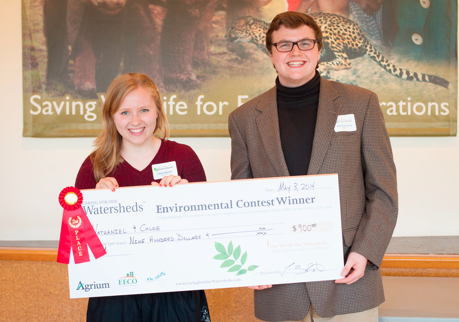2014, Cincinnati, Ohio, USA

Within the Ohio River watershed, there are many subunits, including the Little Miami River watershed. The main focus of Nathaniel Polley and Chloe Halsted from Wyoming High School fell in Clinton County, as agricultural development contributes greatly to runoff in the Little Miami watershed. The ability to curtail this runoff would serve as a vital step to maintaining the health of the Ohio River.
After speaking with several local farmers, Nathaniel and Chloe discussed the techniques already being utilized with a proven record of success on farmsteads. Among these, and the easiest to implement, is the process of planting cover crops whose sole purpose is to conserve and improve the soil, thus providing a win-win situation for both the environment and the economic interests of the farmers. Cover crops need only a quarter of each acre on a given plot of farmland, yet they are instrumental in preventing erosion.
They needed to isolate which farms contribute the most runoff to the Little Miami watershed before strategizing where to plant cover crops. Overall, decreasing runoff and soil erosion via cover crops and waterways would ensure the stability of freshwater ecosystems and provide safer supplies of fish for human consumption. The initial money contributed to the activation of their phases I and II, which involved the funding for pinpointing sources of pollution alongside the purchase of cover crops. Moving forward, it is the hope that there could be governmental funding to allow farms to continue to improve and reduce the runoff going into the watershed.
